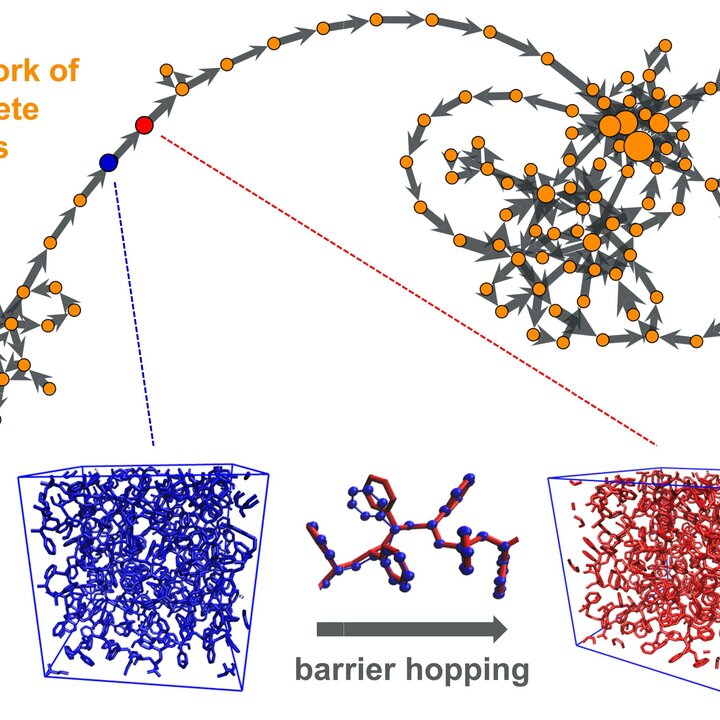
Polymeric materials feature a broad spectrum of processes that operate over an immense range of length and/or time scales that are often simultaneously active, which leads to complex emergent material behavior. Therefore, the main goal of this research focuses on deriving constitutive models for the mechanical behavior of polymers that take the microstructure explicitly into account, as well as the mutual coupling between the microstructure and the macroscopic (engineering) scale. The concrete benefit of such an approach is that fundamental insight about the processes on the micro-scale can be accounted for in a relatively straightforward manner in the constitutive model. As a consequence, numerical calculations of the respective model get substantially more accurate and more predictive.
The systems studied in this research direction include unfilled glassy polymers, semi-crystalline polymers, and filled systems, e.g., elastomers filled with hard nanoparticles. The general strategy to arrive at microstructure-based constitutive relations relies on nonequilibrium thermodynamics modeling. Particularly, multiscale techniques are used to couple the different scales properly in transient situations. In specific cases, systematic coarse-graining is employed to arrive at compact constitutive relations that are truly derived from a fine level of description, by eliminating degrees of freedom.
• Structure – property relations
• Elasto – viscoplasticity of solids
• Kinetic theories for polymers
• Nonequilibrium thermodynamics
• Statistical mechanics
• Multiscale modeling
• Coarse graining
Polymeric materials feature a broad spectrum of processes that operate over an immense range of length and/or time scales that are often simultaneously active, which leads to complex emergent material behavior. Therefore, the main goal of this research focuses on deriving constitutive models for the mechanical behavior of polymers that take the microstructure explicitly into account, as well as the mutual coupling between the microstructure and the macroscopic (engineering) scale. The concrete benefit of such an approach is that fundamental insight about the processes on the micro-scale can be accounted for in a relatively straightforward manner in the constitutive model. As a consequence, numerical calculations of the respective model get substantially more accurate and more predictive.
The systems studied in this research direction include unfilled glassy polymers, semi-crystalline polymers, and filled systems, e.g., elastomers filled with hard nanoparticles. The general strategy to arrive at microstructure-based constitutive relations relies on nonequilibrium thermodynamics modeling. Particularly, multiscale techniques are used to couple the different scales properly in transient situations. In specific cases, systematic coarse-graining is employed to arrive at compact constitutive relations that are truly derived from a fine level of description, by eliminating degrees of freedom.
• Structure – property relations
• Elasto – viscoplasticity of solids
• Kinetic theories for polymers
• Nonequilibrium thermodynamics
• Statistical mechanics
• Multiscale modeling
• Coarse graining
